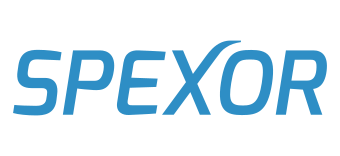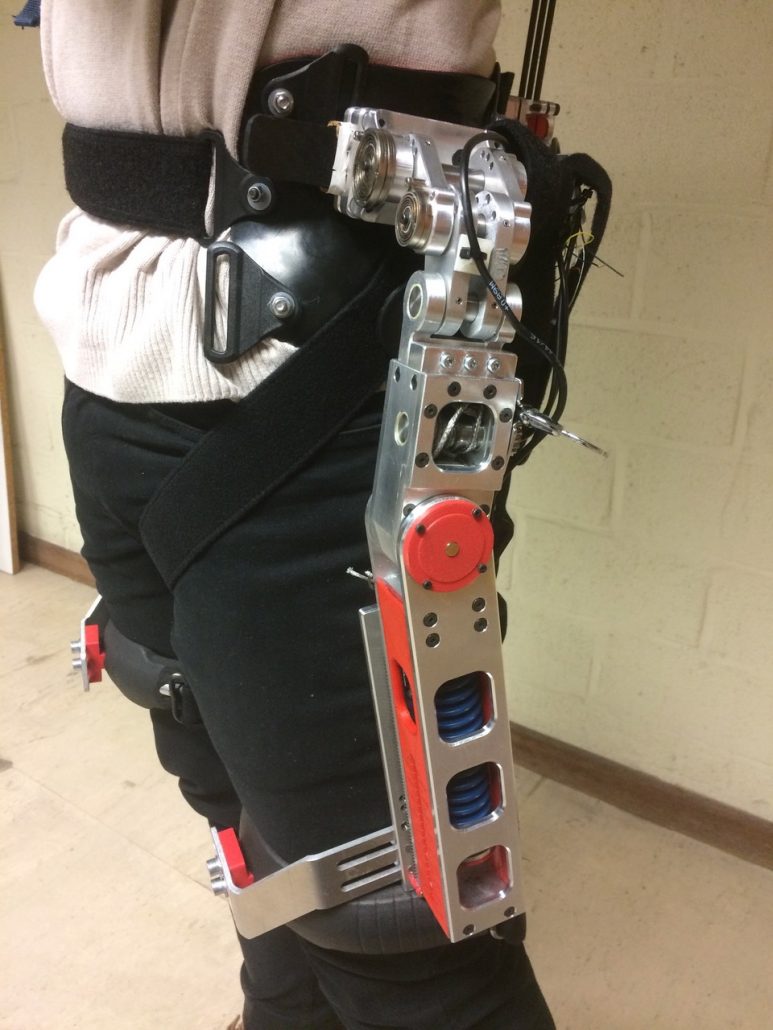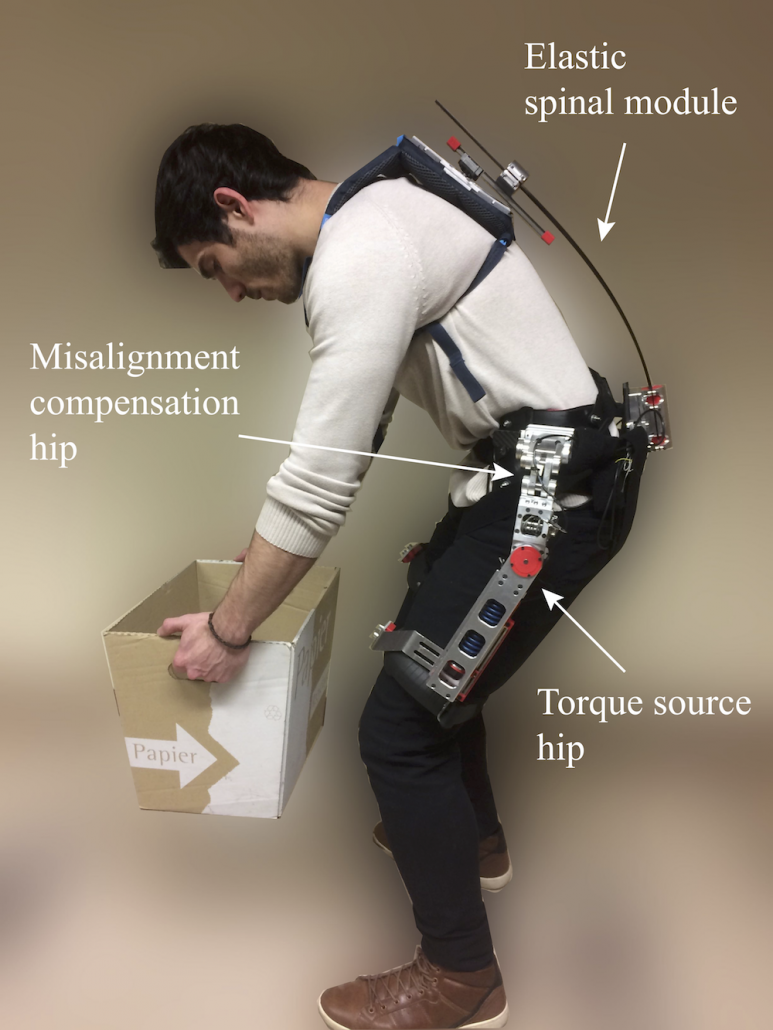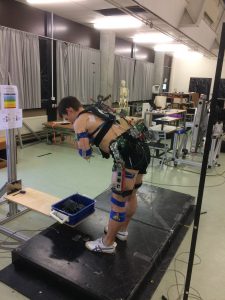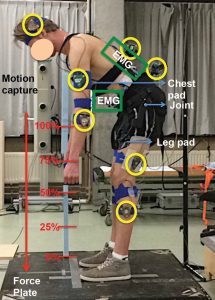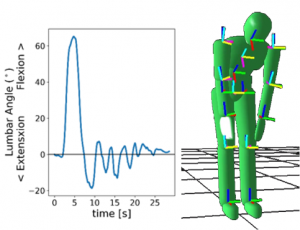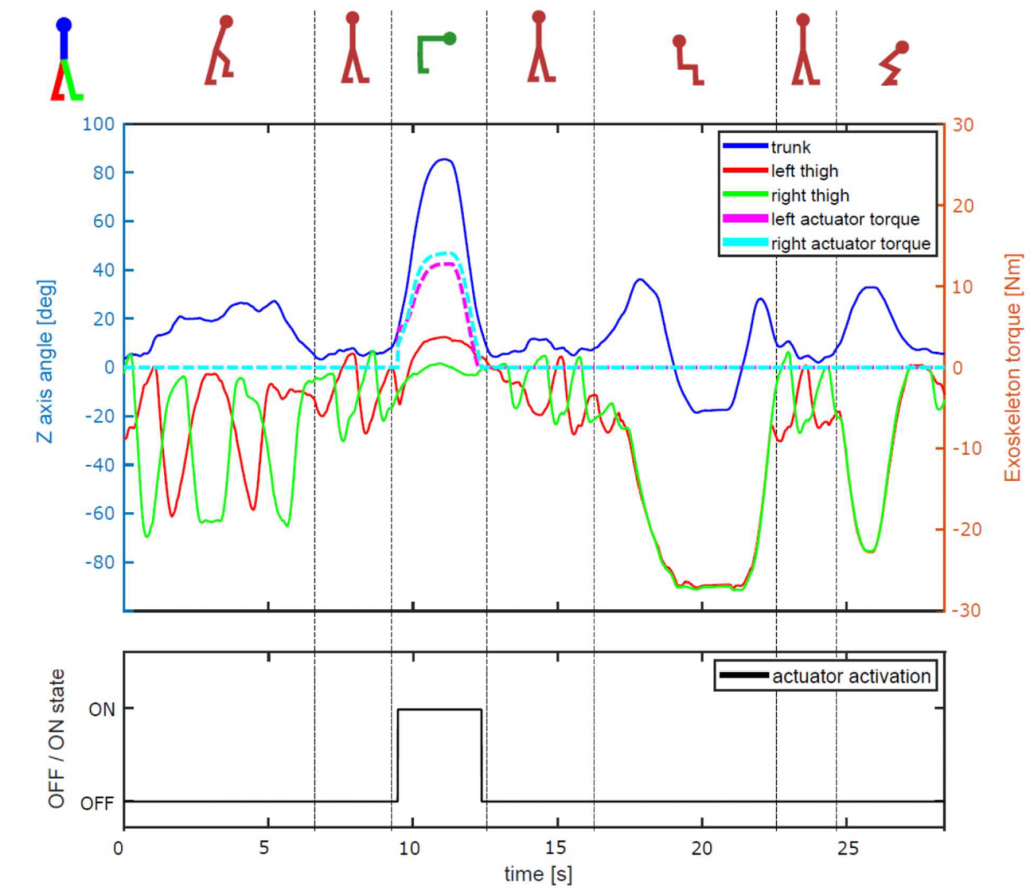Biomechanical requirements for active version of spinal exoskeleton
/in ResearchWe assessed full body kinematics and spine load components in natural lifting, to find kinematic and support pattern requirements for the SPEXOR actuated exoskeleton. Furthermore, using a benchmark actuated exoskeleton, we investigated how specific actuation control modes interact with subject behavior, and how this affects spine loading.
Biomechanical requirements for passive spinal exoskeleton are defined
/in ResearchWe assessed to what extent a benchmark exoskeleton reduces spine loading and changes body kinematics during static trunk bending and during lifting. Additionally, we investigated how it affects perceived comfort, effort, performance, and metabolic energy consumption during functional activities such as walking and stair climbing. Based on these data, biomechanical requirements for the spexor passive exoskeleton were refined.
